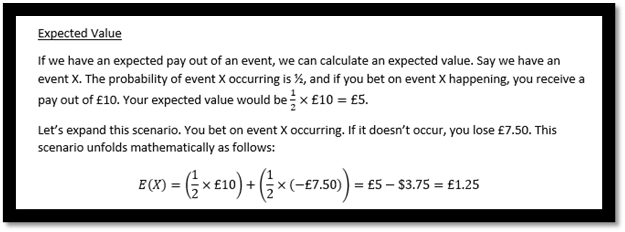Game Theory: The Mathematics of Game Theory – Part 2
I’m starting to really look forward to these Thursday writing sessions. So much so that I have written more but I don't want to release too much in one go. We’re back to one of my favourite topics, mathematics. The language of the universe. Of so many things we understand and are yet to understand.
Note: From last week’s post and continuing into this week, imagine event X is a coin flip landing on heads and heads receiving a payout of £10. Tails mean you pay the other player £7.50. I will incorporate this into last week’s post for the final version.
Before diving into today’s topic, there are more terms I want to introduce you to.
Variance – Look back at last week’s piece to see how I explained the expected value of an event occurring.
The variance describes the spread of possible outcomes from the expected value. So as we see in the above first example, on average you would win £1.25, the variance measures how far the results will spread from the average. Let’s calculate it here.
Note: When you multiply two negative numbers, you get a positive result. So when squaring -7.50, (-7.50 * -7.50), we get a positive result. Variance can be used to predict how a large number of losses will affect us, and it has to be positive. If the variance is negative, something has gone wrong.
To compare expectations and variance, we have to calculate the standard deviation. This is because variance is the units of expectation squared per event squared. The standard deviation is the square root of the variance.
Keep reading with a 7-day free trial
Subscribe to Geopolitics Explained to keep reading this post and get 7 days of free access to the full post archives.



